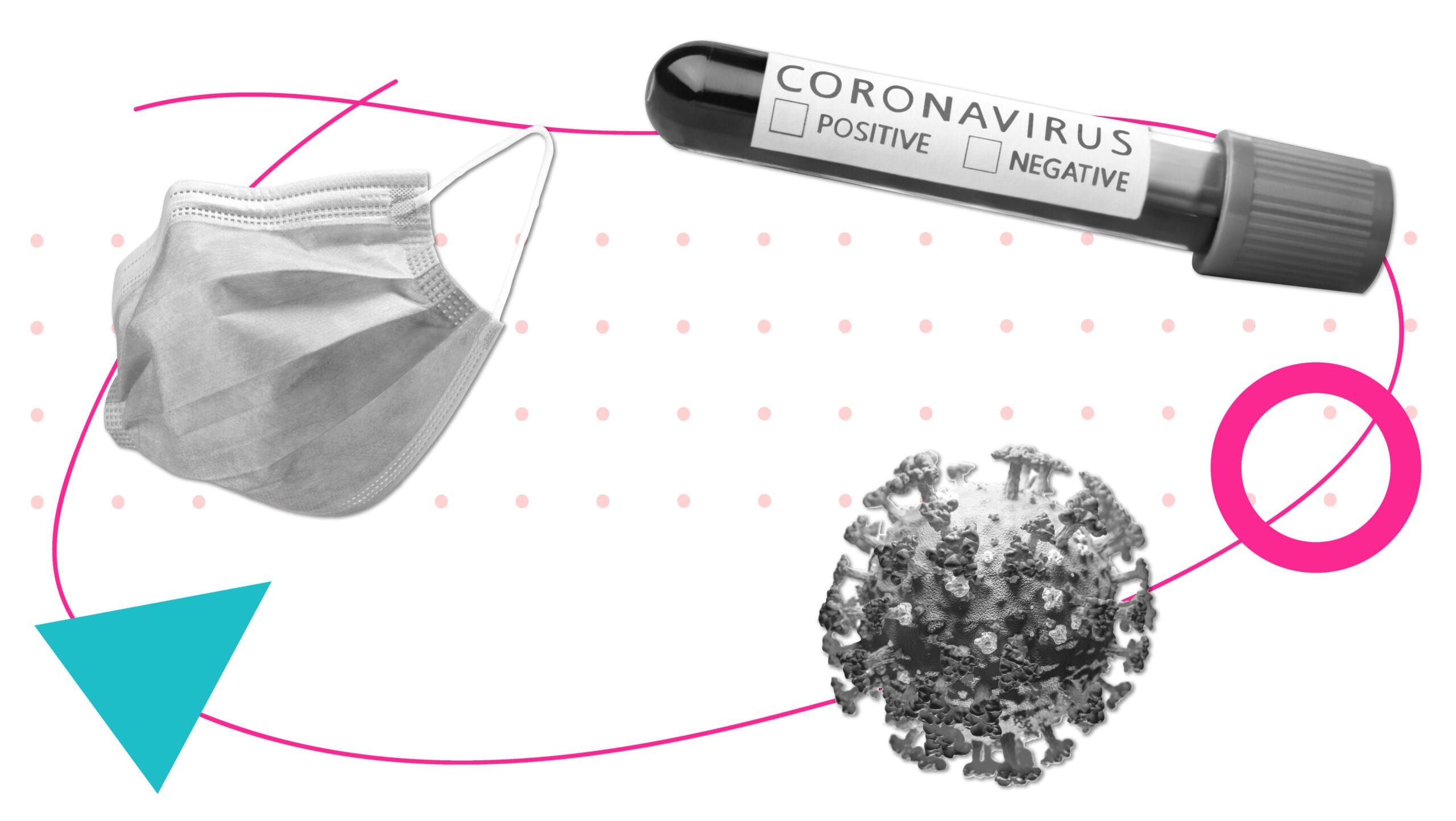Across North America, queer and trans folks—especially those who are Black, Indigenous or people of colour (BIPOC)—are among the higher-risk categories for COVID-19. But only now are some public health agencies beginning to track the pandemic’s impact on the LGBTQ2 community.
“I believe the refusal to collect this data is in fact a marginalization of queer health,” says OmiSoore Dryden, the James R. Johnston Chair in Black Canadian Studies in Dalhousie University’s Faculty of Medicine and an associate professor in the Department of Community Health and Epidemiology. “But we also must remember that not enough is being done to address the social determinants of health, like homophobia and transphobia, which have negative impacts on the health of queer and trans people. And this is even more important when addressing the interlocking dynamics of racism and homophobia on the health of Black queer and trans people,” writes Dryden in an email.
“When the data is not collected, we become further ‘invisible’ to decision makers. However, this is not just a lack of data. The focus is actually on diminishing health disparities that queer and trans folks face and experience, in particular, Black and Indigenous LGBTQ2S folks and LGBTQ2S folks of colour.”
Dryden joins a growing chorus raising alarm around the issue. In March, a coalition of American health care groups warned in an open letter that the LGBTQ2 population was at increased risk.
“The LGBTQ+ population uses tobacco at rates that are 50 percent higher than the general population,” the letter stated. “COVID-19 is a respiratory illness that has proven particularly harmful to smokers. The LGBTQ+ population has higher rates of HIV and cancer, which means a greater number of us may have compromised immune systems, leaving us more vulnerable to COVID-19 infections. [And] LGBTQ+ people continue to experience discrimination, unwelcoming attitudes, and lack of understanding from providers and staff in many health care settings, and as a result, many are reluctant to seek medical care except in situations that feel urgent—and perhaps not even then.”
A recent study from the Centre for Addiction and Mental Health in Toronto also showed that trans people had higher rates of asthma, diabetes, chronic obstructive pulmonary disease and HIV than the cisgender population. These conditions put trans people at increased risk of severe effects from COVID-19.
Public health agencies across North America have been collecting data on infection rates among other minority populations, and those statistics have shown that BIPOC are becoming infected with COVID-19 at a higher rate and have poorer health outcomes than the general population.
A recent survey from Canadian advocacy group Egale also suggests that queer and trans people—and especially those who are BIPOC—are more likely than the general population to know somebody who has died from COVID-19. They are also more likely to have been admitted to the hospital for COVID-19 or to know somebody who has been; more likely to have either experienced symptoms themselves or to know someone who has; and are more likely than the general population to have either sought treatment for COVID-19 or to know someone who has.
According to the survey, 14 percent of BIPOC queer and trans people know somebody who has died from COVID-19 versus 10 percent of LGBTQ2 people in general and 8 percent of the national population. Twenty-one percent of BIPOC queer and trans people say they have been admitted to the hospital for COVID-19 compared to 9 percent of both LGBTQ people in general and the national population.
“Most health care professionals who have significant populations of LGBT patients are of the strong belief that they are among the hardest hit.”
Craig Andrade, the associate dean of practice at the Boston University School of Public Health, says that despite the lack of data collection by government bodies, he’s sure the LGBTQ2 community has a higher rate of infection.
“Most health care professionals who have significant populations of LGBT patients are of the strong belief that they are among the hardest hit,” says Andrade.
Andrade says the lack of official data in the U.S. is due to a combination of homophobia and public health organizations being overwhelmed.
“For some states, it’s being overwhelmed. For other states, they’re still not letting their residents receive Obamacare, let alone keeping data for LGBT communities.
“Even in more progressive states, health authorities are in the process of being overwhelmed. In places like Massachusetts, Rhode Island, California—they’ve only just begun reporting that data. Then there are other parts of the U.S. that don’t even want to think about that population as being real. The community has to see something in that lack of urgency.”
The California Department of Health and Human Services, for example, only announced on July 28 that it would begin collecting data on patients’ sexual orientation and gender identity.
In Canada, the situation is no better. By press time, Health Canada had not replied to repeated queries about whether it has any data on the rate of COVID-19 infection among the LGBTQ2 population. “We do not currently collect data on sexual orientation or gender identity. Our folks were also not aware of COVID rates being higher among LGBTQ+ communities,” states Heather Amos, a communications officer with the B.C. Centre for Disease Control.
But Dr. Vinita Dubey, the associate medical officer of health for the City of Toronto, says the city is collecting data on the infection rate for trans people. “Toronto Public Health (TPH) collects data on gender as part of the case and contact investigation process,” she writes in an email. “This question includes transgender as an option for the client to select. There are five cases of COVID-19 who identified as transgender as of August 10, 2020; this represents less than 0.1 percent of cases.”
But she says the city is not collecting information on the wider LGBTQ2 population. “Data on sexual orientation and COVID-19 infection rates are not currently collected by TPH as a part of the investigation process. TPH is exploring opportunities to collect additional socio-demographic information from a sample of COVID-19 cases, including information on sexual orientation and gender identity. This sample is intended to be representative of people with reported COVID-19 infection in Toronto.”
Dalhousie University’s Dryden, who has written extensively on health in the Black queer community in Canada, says the gaps in data reflect the problems in the wider health care system. She says that data for minority populations could be used to assess the systemic discrimination within health care settings.
“They need to actually listen to us when we identify the ways in which health systems and health workers’ bias (homophobia, transphobia, racism) place us at greater disadvantage and how this has resulted in negatively impacting our health and our health outcomes.”
But Dryden also recognizes that LGBTQ2 people might be reluctant to identify themselves to government bodies. “It is risky business to collect this information,” she writes. “We have a lot of examples in which knowing one’s sexual orientation and gender identity continues to put us at risk, which is further complicated if you are Black, Indigenous or a person of colour.”
That ambivalence is shared by Brenda McPhail, the director of the Privacy, Technology and Surveillance Project at the Canadian Civil Liberties Association. McPhail says that Canada’s privacy laws focus on protecting individuals rather than groups. “The hope is that good data can help prove discrimination, whether intentional or unintentional,” she says. “But you can’t anticipate the ways in which information can be twisted. I think that historic experience shows quite clearly that data collection can be a double-edged sword. There was an incorrect assumption that AIDS applied only to the gay community.
“You think you can predict or ameliorate the ways in which data can be used against groups. But you can’t underestimate the ingenuity of people in finding ways to use information against groups.”
Andrade admits that such fears might also lead to underreporting from those who choose not to out themselves to health authorities. But he says that collecting any data is preferable to collecting none, and that valuable conclusions can still be extrapolated.
Andrade, who was a nurse during the AIDS crisis in the 1980s, also hopes that collecting data might help prevent a repeat of history by encouraging the sort of activism that forced governments to address that pandemic.
“All of that happened in the middle of just flat-out racism, homophobia, dehumanizing people around the globe” he says. “The community advocacy that the LGBT community marshalled to force governments to acknowledge them, to see them, we did that despite the hate, discrimination and marginalization.
“Well, there are still places where people are still stigmatized for who they are.”
Legacy: October 2, 2020 9:45 amUPDATE: In September, the federal government announced a $12.4 million investment, spread out over 22 studies, to better understand rates of COVID-19 infection and immunity in Canada. Of it, $661,542 will fund a national study on the impact of COVID-19 on LGBTQ2 people, led by Community-Based Research Centre (CBRC) along with community organizations such as Egale, Exchante and YouthCO. The study will include a bilingual online survey of LGBTQ2 folks across Canada to determine the effects of COVID-19—as well the effects of physical distancing measures and interrupted health services, like HIV testing or gender-affirming care—on the community’s health and well-being. Participants will also be sent a finger-prick blood-test kit to test for COVID-19 antibodies, which will help collect rates of infection within the LGBTQ2 population (though participants won’t be told their individual results).


 Why you can trust Xtra
Why you can trust Xtra


